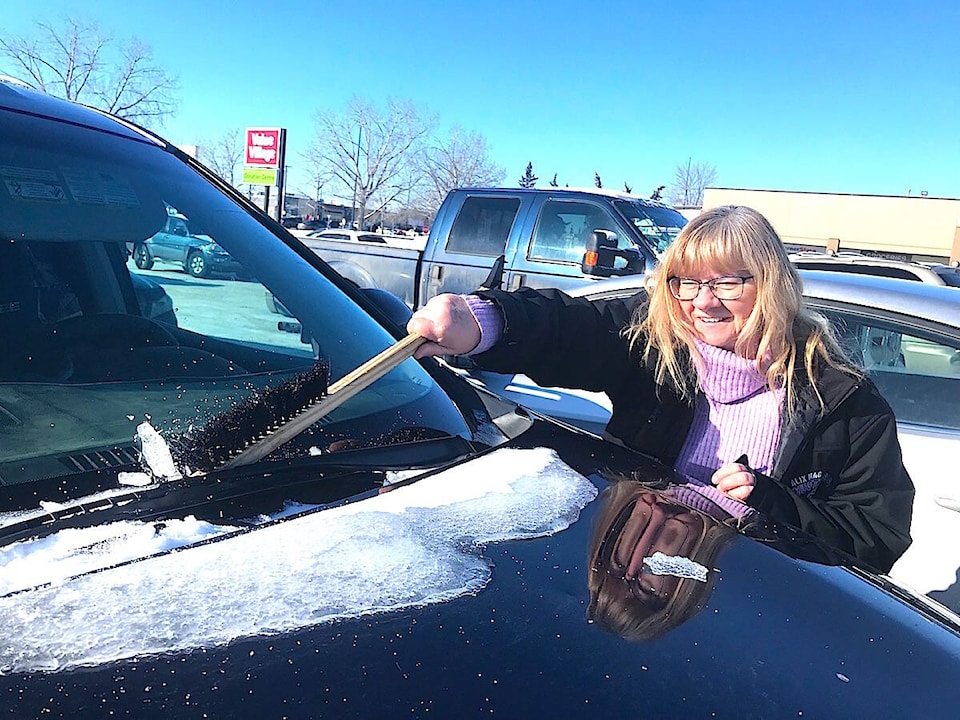Plunging windchill in the minus-40s left many Red Deer-area motorists struggling to start their vehicles on Tuesday morning.
After last week’s balmy, above-normal weather, Monday overnight temperatures came as a bracing shock to many central Albertans. Kyle Fougere, meteorologist for Environment and Climate Change Canada, said the actual low in the city was -33.9 C — and with windchill it was -43 C.
Many motorists were clearly unprepared for the abrupt change. Some found their vehicle doors frozen shut on Tuesday morning, a layer of hard ice also coating the windshield.
Mar-Tin Towing and Recovery of Red Deer reported receiving 20-plus calls for battery boosts between 5 and 11 a.m. These vehicles were either not plugged in overnight, or had old batteries that expired in the extreme cold.
“When the battery is weak, or pregnant — which is what we call it when it’s bulging — people may not understand that it can die in the cold,” said the company operator Tuesday. “Boosts is all that I’ve been doing…”
Other local companies, including Trio Towing, were busier than usual, fielding multiple calls to tow vehicles.
Fougere predicted the cold front that moved down across the region from the northeast on Sunday will stick around for a few more days. On Wednesday, a high of -13 C and a low of -32 C are expected.
This means an extreme cold weather warning from Environment Canada will continue to be in effect for Central Alberta on Wednesday.
“If you can’t postpone (a car trip) please carry an emergency kit in your vehicle,” he said, containing warm clothing, a blanket, and a candle and matches. Fougere advised anyone who gets stranded to wait inside the vehicle for help to arrive. When people wander away to seek assistance, they tend to succumb to hypothermia.
Bashaw resident Beth Strohschein who was in Red Deer on Tuesday, had to chip stubborn ice off her daughter’s vehicle to get the windshield wipers working properly. Given the level of difficulty this entailed, Strohschein was compelled to help clear snow off a stranger’s vehicle in a public parking lot. “It had handicapped tags… and I could see someone had tried to wipe snow from the (hood) of the car,” but didn’t make much headway, she said.
By Friday, temperatures are expected to climb back up to seasonal highs of about -2 C. But the snow that steadily fell on the city last week is not expected to allay what’s been a very dry winter.
Fougere said this December through February remains the second driest on record since 1916. (The driest conditions were last winter.) The total precipitation since Dec. 1 was only about 28 per cent of normal, he added, noting Red Deer received 11 mm of wet stuff, so far, compared to an average of 41 mm for the three-month period.
March is typically the snowiest month in this region. Fougere said spring does tend to “ramp up” the snow and rain in central Alberta. But he anticipates temperatures will be below normal this year because of the lingering effects of La Nina, the cooling of ocean currents in the Eastern Pacific.
While it’s too early to make any forecasts about the summer, Fougere, like others, is hoping not to see a repeat of the forest fires and heat strokes of last year. “I hope we don’t see a heatwave like that again.”
